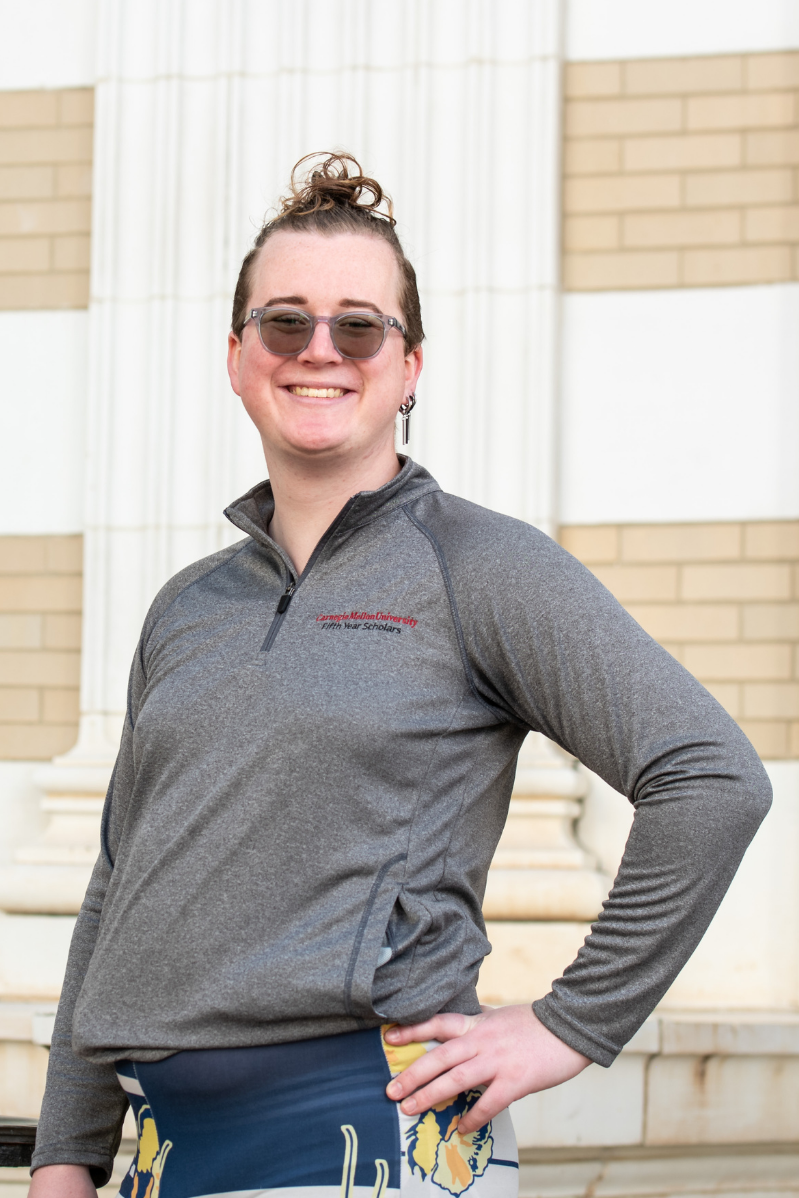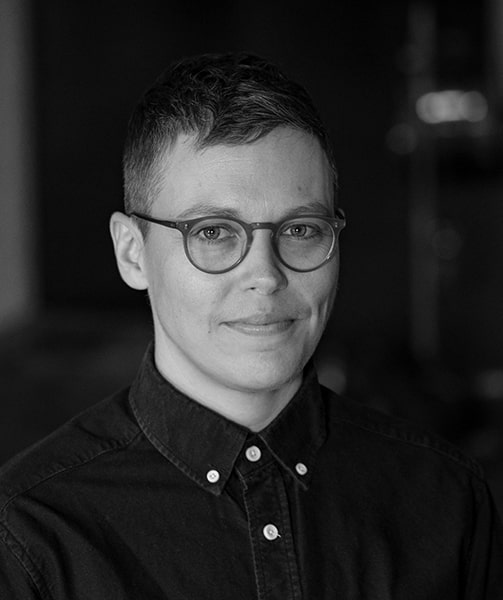A Friend in TINA
CMU's Trans, Intersex, Nonbinary Alliance advocates for changes in gender-inclusive housing, identity management and restroom access
By Michael Henninger
Media Inquiries- University Communications & Marketing
- 412-268-2902
Carnegie Mellon University aspires to create a transformative university community and ensure that innovative individuals can achieve their full potential. These efforts often begin as grassroots initiatives, such as the Trans, Intersex, Nonbinary Alliance, also known as TINA, where students, faculty and staff who identify within these communities work collaboratively to create an environment where all individuals can feel welcome, supported and safe.
TINA formed nearly three years ago. The group, which serves as a support network, has advocated in the areas of gender-inclusive housing, identity management (how someone is addressed in university systems and communications) and all-gender restroom access. TINA members have made measurable progress, and there's more to be done.
 Noah Riley (left), one of the founding members of TINA and a health promotion specialist for CMU's University Health Services, said the alliance formed out of necessity.
Noah Riley (left), one of the founding members of TINA and a health promotion specialist for CMU's University Health Services, said the alliance formed out of necessity.
"Prior to TINA, CMU had different advocacy groups that intersected, but nothing that was really trans, intersex and nonbinary centered," Riley said. "One of my favorite things about TINA is the cross representation of staff, faculty and students. That involvement allows us to examine and address issues through all our varied capacities."
Its membership includes students like kai ell denazen, a fifth-year scholar with a student-defined major in mediated storytelling through performance and technology, who has spent their time at CMU focused on gender equity in housing spaces.
 denazen (right) is a longtime residential assistant and community advisor in residential education at CMU. They arrived at the university and observed there wasn't an ideal solution within the traditional housing system to accommodate gender non-conforming people despite several initiatives that began around 2007. They said a clear gap between CMU's goal of welcoming students into a community that will sustain their educational career — and the real implementation of that goal — needed to be addressed. denazen has worked with staff members from Student Affairs to examine housing application processes to find better practices and hopes that this process will transform the housing system into one that is equitable for all students.
denazen (right) is a longtime residential assistant and community advisor in residential education at CMU. They arrived at the university and observed there wasn't an ideal solution within the traditional housing system to accommodate gender non-conforming people despite several initiatives that began around 2007. They said a clear gap between CMU's goal of welcoming students into a community that will sustain their educational career — and the real implementation of that goal — needed to be addressed. denazen has worked with staff members from Student Affairs to examine housing application processes to find better practices and hopes that this process will transform the housing system into one that is equitable for all students.
Through involvement with TINA, denazen also joined a working group that helped launch a pilot program offering a new approach to all-gender housing on one floor of Stever Hall. According to Tera Monroe, associate dean of Student Affairs and director of Residential Education, after the success of the pilot program, CMU plans to expand all-gender housing on campus. Upcoming residential renovation projects include all-gender configurations that mirror the pilot program of Stever and reflect broader lessons learned about gender inclusion.
"I'm grateful that we were able to work with members of TINA on housing. These students gave lots of great feedback," Monroe said. "We look forward to continuing this important work together."
"I love TINA because it's a way to turn our challenges into change. I like action-oriented things and I like to solve problems." — kai ell denazen
 Another member of TINA is Nica Ross (left), an assistant teaching professor of video and media design in the School of Drama and co-director of the Frank-Ratchye STUDIO for Creative Inquiry. They have led TINA's work for bathroom access. On campus, it can be more difficult to find all-gender restrooms. The privacy they provide leads to frequent use, sometimes making them unavailable to those who most need them.
Another member of TINA is Nica Ross (left), an assistant teaching professor of video and media design in the School of Drama and co-director of the Frank-Ratchye STUDIO for Creative Inquiry. They have led TINA's work for bathroom access. On campus, it can be more difficult to find all-gender restrooms. The privacy they provide leads to frequent use, sometimes making them unavailable to those who most need them.
"Members of the transgender, gender non-conforming CMU community are asked to do so much extra work in order to be present to work or study, and it's easy to miss that labor," Ross said. "Restrooms are a point of stress for me. Binary restrooms are everywhere and plentiful. Whereas I have to choose between being late, leaving a building and walking way off course, or using a binary gendered restroom that doesn't feel safe for me. There are places on campus where a student leaving class for the bathroom could miss 30 minutes of class. TINA is working to address these issues."
Ross' efforts toward bathroom equity don't go unnoticed within TINA.
"Nica is a CFA faculty member, and they know plumbing code like the back of their hand now," Riley said. "This is not part of our job description. The work we do in TINA is out of necessity. We're all passionate about making this a place where we truly belong."
While advocacy is important, Ross said that TINA is so much more.
"Signing up for TINA doesn't mean you're volunteering for a dozen committees and taking on all this work," Ross said. "While some of us are heavily invested in advocacy, we also get together to play role playing games and talk about local artists and shows. There's a social aspect to it."
Through organizing, TINA has driven the conversation about trans, intersex and nonbinary equity at Carnegie Mellon, though its members know that change is an ongoing process.
"Steady progress can be so incremental and frustrating, like scaling a wall, and doing it alone without institutional mechanisms on your side. You're always at risk of falling," denazen said. "TINA coming together is an incredible steppingstone for our resilience, ensuring the sustainability of our efforts."